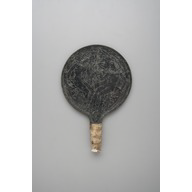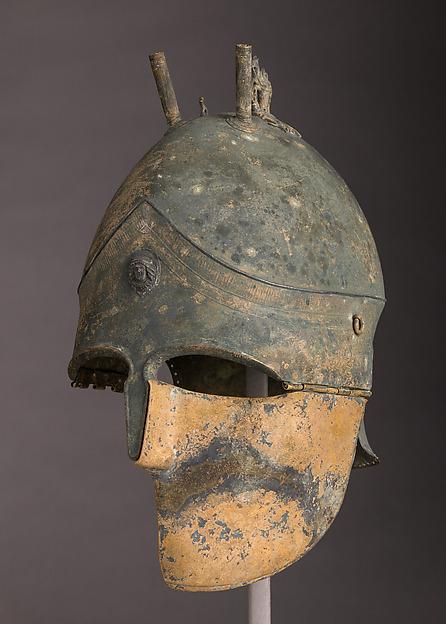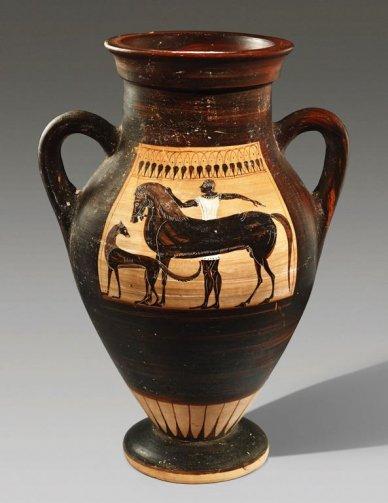2014.121.96

Object Title
Mirror
Measurements
26.5 x 17.3 cm (10 7/16 x 6 13/16in.) other (Handle): 7.2 x 2.8 cm(2 13/16 x 1 1/8in.) other (Mirror): 23.5 x 17.3 cm(9 1/4 x 6 13/16in.)
Creation Date
4th–3rd century B.C.
Credit Line
Bequest of Erika and Thomas Leland Hughes, B.A. 1945, LL.B. 1949
Museum Name
Culture
Country of Origin
Object Type
Materials / Techniques
Object URL
https://artgallery.yale.edu/collections/objects/110212
Provenance Information
Appraised by Edoardo Almagia, Antiquities and Medieval Works of Art, New York, 1986 and 1991; Collection of Erika and Thomas Leland Hughes by or before 1986; Insurance record, 1991; Yale University Art Gallery, New Haven, Conn., acquired by bequest from the above, 2014.
Exhibition Information
Art for Yale: Collecting for a New Century, Yale University Art Gallery, New Haven, 09/18/2007–01/13/2008
Publication Information
Art for Yale: Collecting for a New Century, exh. cat. (New Haven, Conn.: Yale University Art Gallery, 2007), 200, 387, pl. 184.
Giuseppe Sassatelli, ed., Corpus Speculorum Etruscorum: Bologna - Museo Civico II (Rome: L'Erma di Bretschneider, 1981), 15–16, 40–41, no. 4, fig. 4.
Meghan C. Freeman, "Ambiguous Reflections: A Unique Etruscan Mirror at Yale," Yale University Art Gallery Bulletin (2016): 90–91, fig. 1–2.
"Acquisitions 2015," http://artgallery.yale.edu/sites/default/files/files/Pub_Bull_acquisitions_2015_updated%2012_16_15.pdf (accessed December 1, 2015).
Giuseppe Sassatelli, ed., Corpus Speculorum Etruscorum: Bologna - Museo Civico II (Rome: L'Erma di Bretschneider, 1981), 15–16, 40–41, no. 4, fig. 4.
Meghan C. Freeman, "Ambiguous Reflections: A Unique Etruscan Mirror at Yale," Yale University Art Gallery Bulletin (2016): 90–91, fig. 1–2.
"Acquisitions 2015," http://artgallery.yale.edu/sites/default/files/files/Pub_Bull_acquisitions_2015_updated%2012_16_15.pdf (accessed December 1, 2015).
Section of the AAMD Guidelines relied upon for the exception to 1970
Gift or bequest expected or on loan prior to 2008
Explain why the object fits the exception set forth above
Exhibited as Promised Gift to YUAG in 2007 (Art for Yale: Collecting for a New Century exhibition, 2007); documented ownership by T. and E. Hughes by 1986

